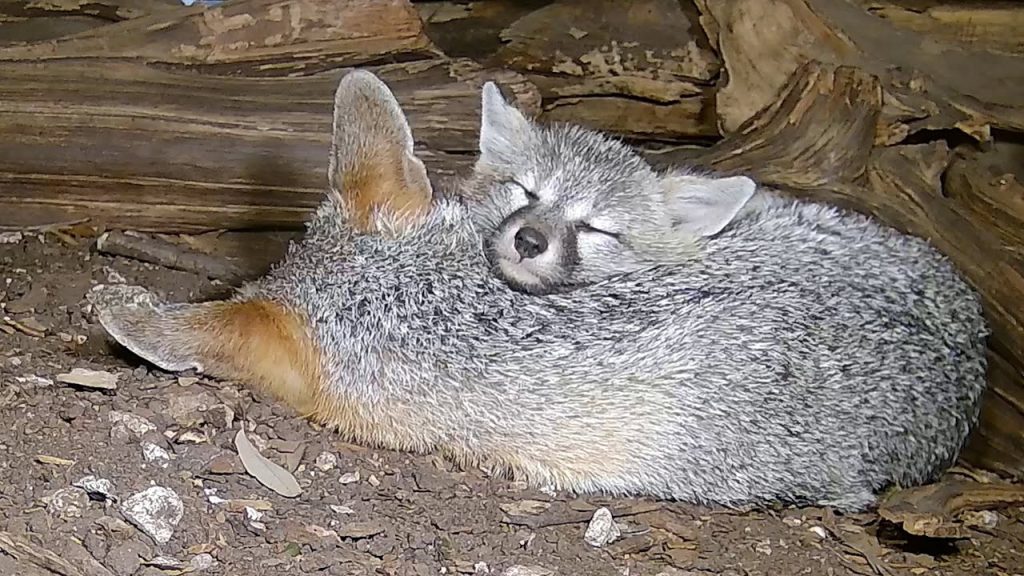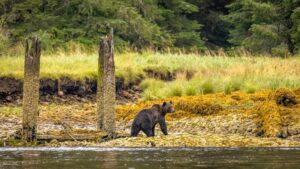Watching animals go through their daily routines, even when there’s not a lot happening, is a good way to relax — hence the popularity of live wildlife cams. These cameras are often seasonal, as migrations or weather bring different species into the spotlight.
Below, a list of the best feeds currently on explore.org, a repository of nature films and live streams. From the secret lives of pandas and wolves to the deceptive richness of a Texas backyard, here’s our roundup of the best cams to watch in November.
5. Lesser Flamingos in Kimberley, South Africa
This comforting livestream always has something feathered and spindly onscreen, no matter what time of day. Outside of the city of Kimberley lies Kamfers Dam, an artificial wetland that treats most of the urban runoff. In 2006, an ornithologist convinced a local diamond mining company to help him create a breeding island for Lesser Flamingos, since the dam waters were filled with their favorite algae.
The island was a hit among the flamingos. Unfortunately, Kimberley’s growth has posed a threat to the site’s safety in recent years. This livestream comes with an asterisk, but it’s well worth the watch.
4. Waterhole at Nkorho Bush Lodge
There are a multitude of South African bush cams live this month, and after careful analysis, I have selected this one as my favorite.
Night or day, it seems like this is the waterhole to be at. If it were a club, there would always be a line of well-dressed young people queuing outside, a bouncer breaking up a fight, and a horde of drunk girls crying on the curb.
During the day, lions prowl the area. Wildebeest cross in cautious herds. At night, the hyenas and wild dogs come out, and insects criss-cross the field of view at all moments.
As of writing this, the same hippopotamus has been slouching in the center of the watering hole for the last 10 hours. None of the other visitors seemed to care. A pack of hyenas trotted by, their laughter mellowed out by the gentle sound of rain falling on the water.
3. Pandas in Gengda Valley, China
I have a thing about pandas: I’m opposed. Listen, I like charismatic megafauna as much as the next guy, but pandas aren’t a keystone species for anything. They’re useless, and I take their survival against the tides of evolution as a sign of God’s existence. It’s time to stop throwing conservation resources at them.
So it is with great regret that I have to admit the Gengda Valley Panda Yard is really entertaining. After watching for a few minutes, I found the great lumbering beasts reaching into my heart. Where before I had described them as stupid with derision, it now seemed a term of affection. Sure, they have no desire to reproduce in captivity unless shown videos of wild pandas copulating. But look at those great fuzzy heads. Isn’t it worth putting zookeepers through awkward rituals to keep these things alive?
I’ve kept this livestream open on my browser for the last week. Every so often, I click back on it. There’s always some great stupid bear onscreen, lazing about. All it does is eat and sleep. More power to you, panda.
2. Texas backyard wildlife
While many of the most popular livestreams on Explore.org shine in one particular season — for instance, during the zebra migration or the salmon runs — there’s always something happening in this Texas backyard. The owners have arranged 68 cameras across their five-acre Austin property, and alternate between them for the best action.
On their cameras, I’ve seen gray fox pups cavorting around a field and raccoons huddling over a snack. Screech owls have flown at the camera before swooping away at the last instant. A garter snake hunted down and ate a frog.
This livestream showcases the incredible biodiversity of urban areas and the impact of rewilding, even on the scale of a single backyard. The owners of this property regularly post highlight videos and photos to their website. They even run a Discord server for their viewers to foster understanding of urban wildlife.
1. The International Wolf Center
It’s strange to think, watching this livestream, that wolves were a nightmare beast to everyone from Alaska to Germany for much of human history. They look so startlingly dog-like and act so communally. But that’s the magic of wildlife cams: that humans get an eye into how animals behave among themselves, without our presence.
Make no mistake, these are not wild wolves. They are living in a luxury compound designed just for them. Zoos rarely keep wolf packs, because their social lives are so complex. Without the ability for one wolf to leave, tensions may lead to violence. At the International Wolf Center (IWC), specialists continually monitor the dynamics between their “ambassador wolves” and relocate individuals, if necessary.
The IWC, like all the best zoos and aquariums, is primarily a research institution. They fund scholarships, conferences, and publish a magazine. Their ambassador wolves facilitate this research, allowing the staff to study pack behavior 24/7, but their real purpose is to encourage the public to care for wolves. The pack includes multiple breeds, including Arctic gray wolves and North American gray wolves. You can read each wolf’s biography on the IWC website.






